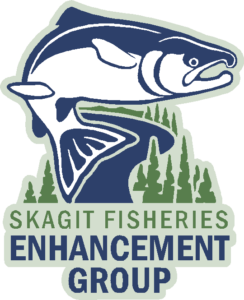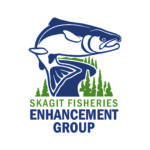Paid Education Internship for River Journey (Recorrido por el Rio) Program
Click here for a full position description!
Are you a bilingual student that enjoys working with kids and being outside? Join our team and be part of a new education program at Skagit Fisheries, the River Journey (Recorrido Por el Rio). This program will take a group of multilingual students on a journey through the Skagit watershed, from the high mountains to the sea. Through this internship you will help teach these students, in Spanish and English, about the native fish and plants & ecology. You will participate in a series of field trips, including rafting the Skagit River, an overnight adventure with the North Cascades Institute, and stream exploration close to home at Little Mountain Park.
Qualifications:
Must be a current college student with a background and interest in education, environmental science/studies, and/or biology. Applicant must be fluent in Spanish, and comfortable teaching students in Spanish and English. This position requires work outside in all types of weather and uneven terrain.
Time Commitment
This is a paid internship that requires a time commitment of 1-2 days a week between 7-8 hours a day, Monday-Friday. There are two overnight field trips, and each intern will be required to attend at least one of these. There may occasional events on weekends (optional). Interns will participate in two field trips per month (Sept, Oct, Nov) and also spend time at the Skagit Fisheries office in Mount Vernon preparing for field trips. The intern will also participate in other education program events. Positions term will be Sept 15-Dec 15, 2025. Total commitment: 150 hours.
To Apply:
Email resume and cover letter to sfeg@skagitfisheries.org as one PDF with the subject line “River Journey Internship”.














